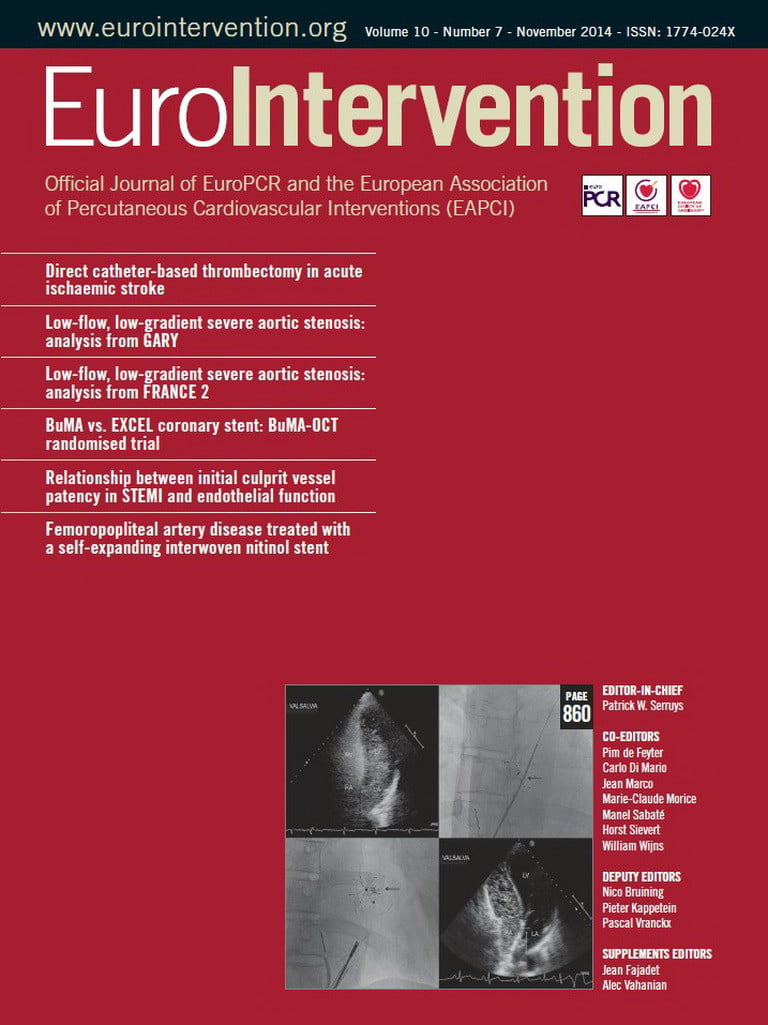Over the years, our Journal has striven to publish reports that one may consider “out of the box”. These “out of the box” papers generally have a subject matter which, at first glance, one might consider unconventional. They complement quite nicely the regular research reports on stenting and valve replacement/repair as well as our usual reports – yet these unconventional papers never fail to attract and arouse curiosity amongst the readers.
This month’s issue includes two papers on interventions within the field of acute ischaemic stroke – nothing unusual you may think. EuroIntervention is after all a journal of interventional reports and, with these two papers, you could safely assume that the interventional radiologist or neurologist would be performing the intervention. However, the novelty is the fact that the interventional cardiologists in both papers are involved in the treatment of this patient group. Also, surpassing this interesting element is the unique management aspect of this particular treatment.
However, first let me draw your attention to the recent annual meeting of the European Society of Cardiology (ESC). Each year, the ESC awards a Gold Medal to three awardees in cardiology (I was very grateful to be awarded one in 2012). This year’s distinguished awardees were Sir Rory Collins, Alain Carpentier and Petr Widimsky, all fully deserving of this award. Petr’s award was in recognition of his impressive career, notably his seminal PRAGUE study as well as his forward thinking together with William Wijns in saving even more lives through the founding of the successful EAPCI Stent for Life Initiative. It was actually a nice “commemorative” touch that he received his ESC Gold Medal in the same city as his landmark PRAGUE 1 presentation at ESC in 1999.
In this current issue, the proud PRAGUE heritage continues with the group now entering into the field of acute ischaemic stroke1. Led, of course, by Petr Widimsky, they report here on their experience in a prospective/pilot study concerning the results of 23 patients with moderate to severe acute ischaemic stroke whom they treated with catheter-based thrombectomy (CBT). Similarly, in this same issue, Omar Goktekin et al report on a retrospective analysis of their findings with CBT in 38 patients2. Whilst noting the obvious inherent limitation of the small data sets, and also taking into account the fact that cardiology colleagues from South Africa were apparently the first to report this3, the Editorial Board elected to publish these two papers as they provide valuable insights into the formation of a Stroke Team, a team includes interventional cardiologists, neurologists and radiologists. The dynamics of this team are very similar to the now well-established Heart Teams. However, it is in the considerable efforts and dedication of both the Prague and the Istanbul teams in trying to create STEMI-like Stroke networks that the crux –and future importance–
of these papers lies. While we appauld these two groups endeavours, we should remain cautious and remind the readers that a superiority of endovascular therapy over the standard of care has yet to be shown in randomised trials5-7.
We know that there are two important aspects which have the most profound effect on outcomes in acute ischaemic stroke. The first is the length of time between symptom onset and treatment (the gold standard is <4.5 hours), and the second is whether recanalisation can be successfully achieved. Mortality rates decrease fourfold with successful recanalisation within the given timeframe as compared to unsuccessful recanalisation4. With this in mind, one can imagine what the effect of a STEMI-like stroke network could have on improving outcomes. Considering the immense experience that the Stent for Life Initiative has gathered over the years, the lessons learned could be applied right away to saving the lives of stroke patients in the near future...and that future would be one great step forward for all of us.

